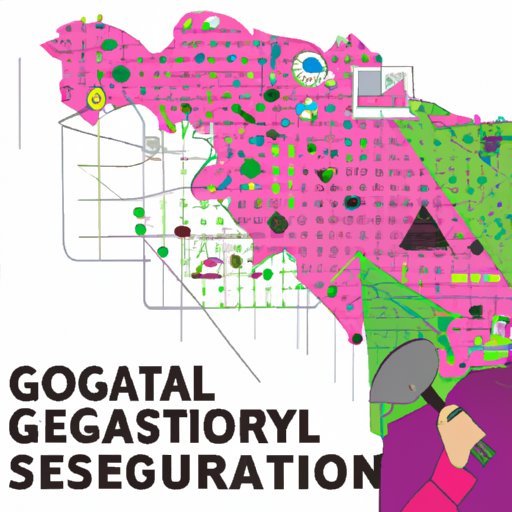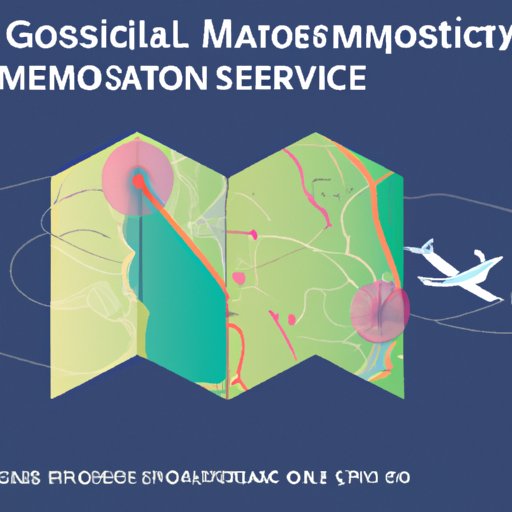Introduction
Geospatial science is an interdisciplinary field that combines geography, computer science, and data science to analyze and visualize spatial data. It is used to study the Earth’s physical features, population, and environment in order to better understand our planet and make informed decisions. This article will explore the benefits, challenges, and future of geospatial science.
Benefits of Geospatial Science
Geospatial science has numerous advantages for businesses, governments, and individuals. Here are some of the major benefits of geospatial science:
Improved Decision Making
Geospatial science enables organizations to make better decisions by providing them with a comprehensive view of their data. By combining geographic information with other forms of data, organizations can gain insights into trends and patterns in their data that would otherwise remain hidden. According to a study conducted by the National Research Council, “the use of geospatial technologies has been shown to improve decision making in many areas, such as public health, emergency response, and economic development.”
Increased Efficiency
Geospatial science helps organizations streamline their operations by providing them with the ability to quickly identify inefficiencies and optimize their processes. This increased efficiency can lead to greater productivity, cost savings, and improved customer service.
Cost Savings
Geospatial science can also help organizations reduce their costs by eliminating unnecessary or inefficient processes. For example, a study conducted by the United Nations Economic Commission for Europe found that the use of geospatial technologies can reduce the cost of infrastructure projects by up to 30%.

Impact of Geospatial Science on Society
Geospatial science has had a profound impact on society, particularly in the areas of infrastructure planning, disaster management, and environmental preservation.
Infrastructure Planning
Geospatial science has made it easier for governments and businesses to plan for new infrastructure projects. By providing detailed maps and images, geospatial science allows planners to accurately assess the potential impacts of a proposed project and make informed decisions about where to build it. For example, a study conducted by the World Bank found that geospatial technologies can reduce the cost of urban infrastructure projects by up to 40%.
Disaster Management
Geospatial science has also enabled governments and aid organizations to better prepare for and respond to natural disasters. By providing detailed maps of affected areas, geospatial science can help emergency responders quickly identify areas that need assistance and plan effective relief efforts.
Environmental Preservation
Geospatial science has helped scientists and conservationists better understand and protect the environment. By providing detailed maps of habitats and species distributions, geospatial science has enabled researchers to identify areas that need protection and develop effective conservation strategies.
Challenges of Geospatial Science
Although geospatial science has numerous benefits, there are also some challenges associated with it. Here are some of the major challenges of geospatial science:
Data Collection and Analysis
One of the major challenges of geospatial science is collecting and analyzing large amounts of data. Geospatial science requires accurate, up-to-date data in order to produce meaningful results, which can be difficult to obtain. Additionally, analyzing this data can be time-consuming and complex, requiring specialized software and expertise.
Accuracy of Results
Another challenge of geospatial science is ensuring the accuracy of the results. Because geospatial science relies on data that is constantly changing, there is always the possibility of errors or inaccuracies in the results. Additionally, if the data is not collected or analyzed properly, the results may be misleading or incomplete.
Use of Geospatial Science in Businesses
Geospatial science is becoming increasingly popular in the business world, particularly in the areas of location-based services, logistics, and supply chain management.
Location-Based Services
Geospatial science is used by businesses to provide location-based services, such as mapping, navigation, and location search. By providing detailed maps and images, geospatial science enables businesses to create personalized experiences for their customers.
Logistics and Supply Chain Management
Geospatial science is also used by businesses to manage their logistics and supply chain operations. By providing real-time updates on the location of goods and inventory, geospatial science enables businesses to track and optimize their operations and ensure timely delivery of products.
Technology Behind Geospatial Science
Geospatial science relies on two main technologies: Geographic Information Systems (GIS) and Global Positioning Systems (GPS).
Geographic Information Systems (GIS)
GIS is a system of hardware and software that is used to collect, store, analyze, and visualize geographic data. GIS can be used to create digital maps, analyze trends and patterns in data, and simulate the impact of proposed changes. By combining geographic information with other forms of data, GIS can provide valuable insights into a variety of problems.
Global Positioning Systems (GPS)
GPS is a satellite-based navigation system that is used to determine the location of a device or object. GPS is used to track the movement of vehicles, monitor the progress of construction projects, and provide detailed maps of geographical areas. GPS can also be used to measure distances, calculate routes, and monitor weather conditions.

The Future of Geospatial Science
Geospatial science is set to become even more important in the coming years, as advances in technology enable us to do more with the data we have. Here are some of the ways geospatial science could be used in the future:
Advances in Technology
As technology continues to advance, geospatial science will become even more powerful and sophisticated. New tools and techniques will enable us to analyze and visualize data in unprecedented ways, allowing us to gain deeper insights into our world.
Increased Usage in Everyday Life
Geospatial science will also become more prevalent in everyday life. Location-based services, such as mapping and navigation, will become even more commonplace, while augmented reality and virtual reality will become more widely used. In addition, geospatial science will be used to monitor and manage resources, such as water and energy, in order to ensure sustainable development.
Conclusion
Geospatial science is an interdisciplinary field that combines geography, computer science, and data science to analyze and visualize spatial data. It has numerous benefits, including improved decision making, increased efficiency, and cost savings. Geospatial science is being used in a variety of fields, from infrastructure planning to environmental preservation, and will continue to be an important tool in the future. As technology advances, geospatial science will become even more powerful and ubiquitous, enabling us to gain deeper insights into our world.
(Note: Is this article not meeting your expectations? Do you have knowledge or insights to share? Unlock new opportunities and expand your reach by joining our authors team. Click Registration to join us and share your expertise with our readers.)
